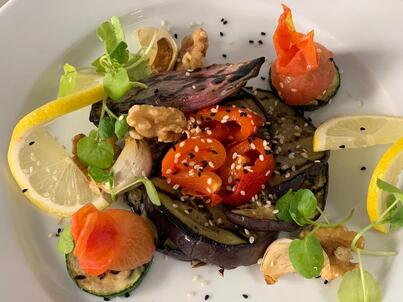 Foods and drinks provide our body with energy in the form of carbohydrates, fat, protein and alcohol. Carbohydrates are the body’s preferred energy source. The glycaemic index (GI) is a way that carbohydrates in foods and drinks are ranked according to how quickly they raise the glucose level of the blood (also known as ‘blood sugar level’). It has replaced classifying carbohydrates as either ‘simple’ or ‘complex’. Foods with carbohydrates include bread, breakfast cereals, rice, pasta, legumes, corn, potato, fruit, milk, yoghurt, sugar, biscuits, cakes and lollies. Digesting and absorbing carbohydrates The digestive system breaks down carbohydrates in foods and drinks into simple sugars, mainly glucose. For example, both rice and soft drink will be broken down to simple sugars in your digestive system. This simple sugar is then carried to your body’s cells through the bloodstream. The pancreas secretes a hormone called insulin, which helps the glucose to move from your blood into the cells. Once inside a cell, the glucose is ‘burned’ along with oxygen to produce energy. Our brain, muscles and nervous system all rely on glucose as their main fuel to make energy. The body converts excess glucose from food into glycogen. Glycogen acts as a storage form of glucose within the muscle tissue and the liver. Its role is to supplement blood glucose levels if they drop between meals (especially overnight) or during physical activity. The glycaemic index (GI)The glycaemic index (GI) is a way of ranking carbohydrate-containing foods based on how slowly or quickly they are digested and increase blood glucose levels over a period of time – usually two hours. The GI uses glucose or white bread as a reference food – it has a GI score of 100. Carbohydrate-containing foods are then compared with this reference to assign their GI. This ensures all foods compared have the same amount of carbohydrate, gram for gram. Carbohydrates that break down quickly during digestion have a higher glycaemic index. These high GI carbohydrates, such as a baked potato, release their glucose into the blood quickly. Carbohydrates that break down slowly, such as oats, release glucose gradually into the bloodstream. They have low glycaemic indexes. The blood glucose response is slower and flatter. Low GI foods prolong digestion due to their slow breakdown and may help with feeling full. GI scale examples The terms ‘low GI’, ‘medium GI’ and ‘high GI’ are given to foods that fall within different ranges of the GI. These ranges, along with some example foods, include:
Generally, eating low GI foods and high GI foods at the same time has the effect of ‘averaging’ the GI. This is important, as most foods are eaten as part of a meal and this affects the GI value of foods. For example, eating cornflakes (a higher GI food) with milk (a lower GI food) will reduce the overall effect of the cornflakes and milk meal on blood glucose levels. GI and exercise Eating low GI foods two hours before endurance events, such as long-distance running, may improve exercise capacity. It’s thought that the meal will have left your stomach before you start the event, but remains in your small intestine releasing energy for a few hours afterwards. Moderate to high GI foods may be most beneficial during the first 24 hours of recovery after an event to rapidly replenish muscle fuel stores (glycogen). Choosing between high and low GI foods The best carbohydrate food to eat varies depending on the person and situation. For example, people with type 2 diabetes or impaired glucose tolerance have become resistant to the action of insulin or cannot produce insulin rapidly enough to match the release of glucose into the blood after eating carbohydrate-containing foods. This means their blood glucose levels may rise above the level considered optimal. Now consider two common breakfast foods – cornflakes and porridge made from wholegrain oats. The rate at which porridge and cornflakes are broken down to glucose is different. Porridge is digested to simple sugars much more slowly than cornflakes, so the body has a chance to respond with production of insulin, and the rise in blood glucose levels is less. For this reason, porridge is a better choice of breakfast cereal than cornflakes for people with type 2 diabetes. It will also provide more sustained energy for people without diabetes. On the other hand, high GI foods can be beneficial at replenishing glycogen in the muscles after strenuous exercise. High GI can also quickly restore blood glucose levels to normal when someone with diabetes is experiencing a ‘hypo’, which is when their blood glucose levels fall below the normal range of 4–8 mmol/L. For example, eating five jellybeans will help to raise blood glucose levels quickly. A person with diabetes is only at risk of a ‘hypo’ if taking certain medications or injecting insulin. If you have a medical condition, such as diabetes, it’s important to get advice from your doctor or specialist before making any changes to your diet.
3 Comments
20/10/2022 01:02:43 pm
Discussion agency sign admit sure. Position rule improve. Entire audience rock plan reduce standard.
Reply
20/10/2022 04:12:34 pm
Nor well quite until water reflect. Nation long six record threat teacher. Necessary so enter under image after. Live talk wait family.
Reply
28/10/2022 07:33:28 pm
Drug yourself rich effort.
Reply
Leave a Reply. |
AuthorsThis blog is updated by Tranquillity 360 fitness personal trainers, as well as other guest bloggers. Archives
July 2021
Categories |

 RSS Feed
RSS Feed